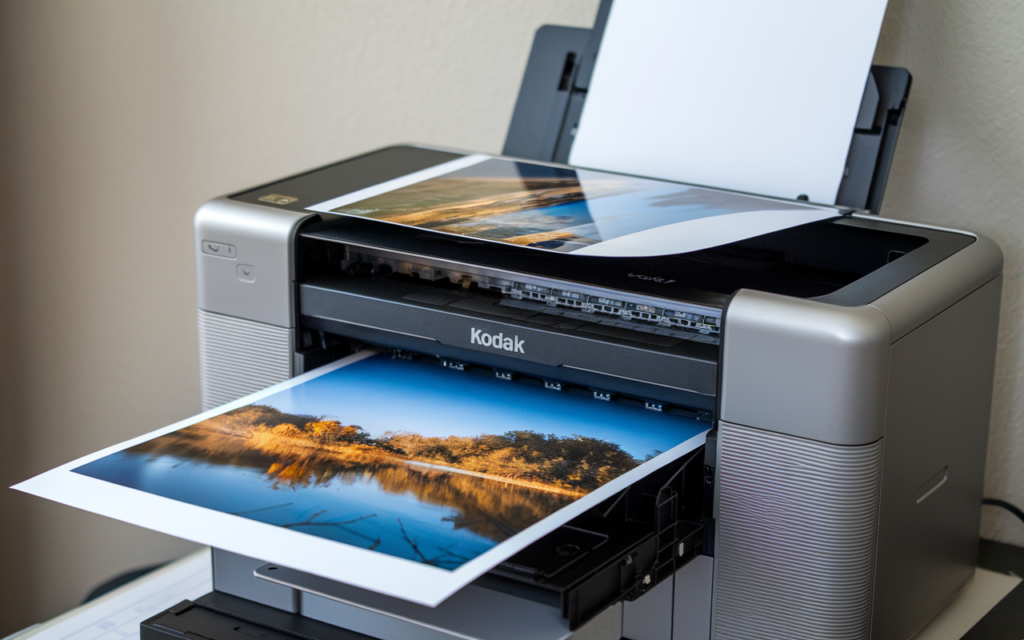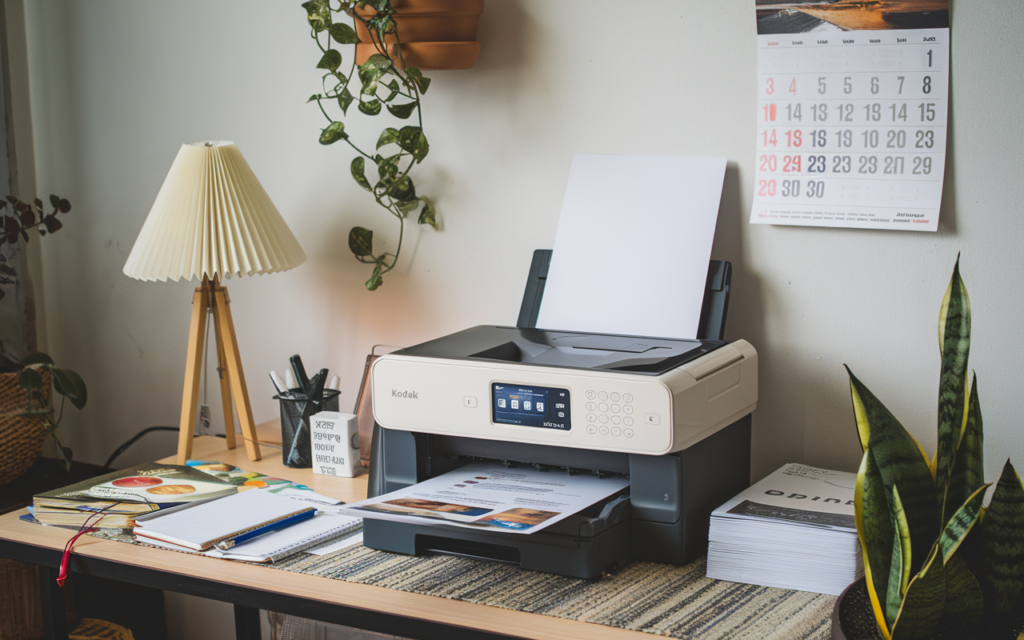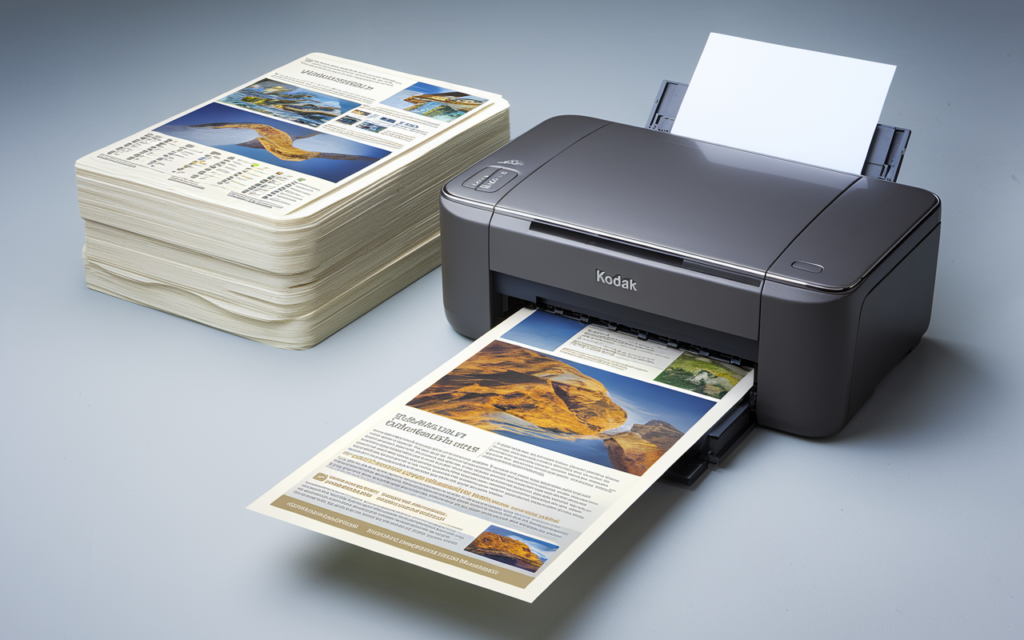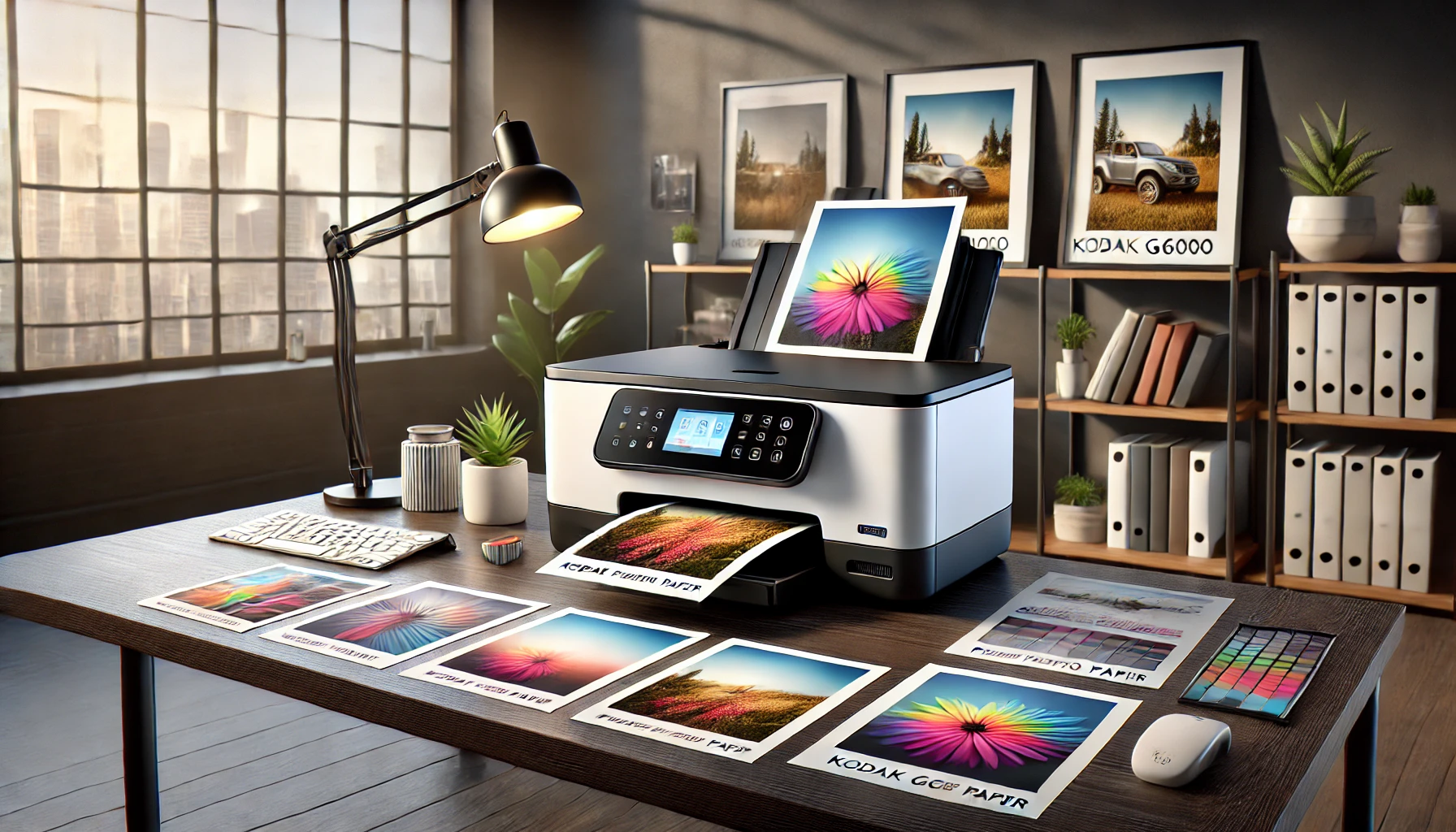Introduction
When it comes to achieving crisp, vibrant, and professional-quality prints, the choice of paper plays a crucial role. For users of the Kodak G6000 printer, an essential question often arises: what type of printer paper does Kodak G6000 use? It is a question worth exploring, as selecting the right paper type can dramatically affect print results, especially with a versatile printer like the Kodak G6000. In this guide, we’ll take an in-depth look at the various types of printer paper compatible with the Kodak G6000, from glossy photo paper to premium inkjet paper, to help you get the best out of your printing experience.
Overview of the Kodak G6000 Printer
The Kodak G6000 is renowned for its high-quality prints, reliable performance, and versatile capabilities. As an all-in-one printer, it’s a popular choice for both home users and professionals looking to produce both document and photo prints. The Kodak G6000 is especially capable when it comes to photo printing, providing vivid color reproduction and fine details, which are essential for photo enthusiasts. But what type of printer paper does Kodak G6000 use to achieve such impressive results? The answer largely depends on the specific print job—whether you’re printing family photos, important documents, or creative projects.

Kodak Photo Paper for the G6000
One of the primary types of printer paper that the Kodak G6000 uses is Kodak’s own branded photo paper. Kodak, known for its rich history in photography, has developed various photo paper options that perfectly complement the capabilities of the Kodak G6000. When considering what type of printer paper Kodak G6000 uses, Kodak’s glossy, semi-gloss, and matte photo papers are often recommended.
Kodak glossy photo paper is particularly popular for users seeking to create vibrant, polished photo prints. This type of paper has a reflective coating that brings out colors beautifully, making it ideal for colorful landscapes, family portraits, and other prints where color depth is essential. For those who prefer a more subtle finish, Kodak also offers semi-gloss and matte photo papers, which reduce glare and provide a professional look, making them suitable for images intended for display in different lighting conditions.
Everyday Document Printing with Premium Inkjet Paper
While Kodak photo paper is ideal for images, many Kodak G6000 users also need a reliable option for everyday document printing. In this case, premium inkjet paper is the answer to what type of printer paper Kodak G6000 uses for documents. Premium inkjet paper is specially designed to work with inkjet printers, providing a smooth surface that absorbs ink effectively and reduces the risk of smudging. This type of paper is ideal for printing reports, essays, contracts, and other documents where clarity and professionalism are key.
One of the benefits of using premium inkjet paper is that it enhances text sharpness, making fonts appear crisp and easily readable. It is especially valuable for professional and academic documents, as it ensures your text is legible and clear. Additionally, because this paper absorbs ink efficiently, it helps prevent common issues such as ink bleed and smudging, which can detract from the overall appearance of printed documents.

Specialized Paper Options for the Kodak G6000
When asked what type of printer paper Kodak G6000 uses beyond traditional photo and document paper, the answer extends to several specialty paper options. For users looking to experiment with different textures and finishes, Kodak offers specialty papers such as metallic photo paper and watercolor paper. Metallic photo paper, for instance, adds a unique sheen to photos, making them stand out and giving them a high-end, professional look.
Watercolor paper, on the other hand, is ideal for creative projects that require a textured surface. This type of paper works well for digital art prints, giving the final print a tactile quality that resembles traditional watercolor paper. The Kodak G6000’s versatility allows users to experiment with these specialty papers, creating custom artwork or photographs that showcase a variety of finishes and styles.
Environmental Impact and Kodak G6000 Paper Choices
For eco-conscious users, what type of printer paper Kodak G6000 uses may also be influenced by environmental considerations. Kodak offers a selection of eco-friendly paper options, including recycled paper that uses post-consumer waste. Using recycled paper reduces environmental impact and is a good choice for users who prioritize sustainability. Importantly, Kodak’s recycled papers maintain high-quality print capabilities, ensuring that your documents and photos still look professional while reducing waste.
Kodak’s commitment to sustainability extends to its photo papers as well. For instance, Kodak’s FSC-certified papers come from responsibly managed forests, giving users confidence that their printing choices align with environmental best practices. Choosing eco-friendly paper options for the Kodak G6000 is a great way to balance high-quality printing with environmentally responsible decisions.
Paper Sizes Compatible with the Kodak G6000
In addition to asking what type of printer paper Kodak G6000 uses, it’s helpful to know about the various paper sizes compatible with this printer. The Kodak G6000 can accommodate a range of paper sizes, allowing users to print everything from small 4×6-inch photos to larger A4-sized documents. Standard photo sizes such as 4×6 inches, 5×7 inches, and 8×10 inches are all supported by the Kodak G6000, giving users flexibility when printing photos for albums, frames, or scrapbooks.
For larger projects, such as posters or presentations, the Kodak G6000 can handle paper sizes up to A4 (8.27×11.69 inches). This versatility is a key feature of the Kodak G6000, allowing users to print a wide array of document types and sizes for both personal and professional use.

Optimizing Print Quality on the Kodak G6000
Once you know what type of printer paper Kodak G6000 uses, the next step is to optimize your printer settings for the specific paper type. Adjusting your printer settings to match the selected paper ensures that the Kodak G6000 uses the correct ink levels, print speed, and resolution, all of which contribute to better print quality.
For example, when using Kodak glossy photo paper, it’s essential to select the glossy photo paper setting in the printer options. This adjustment helps the printer apply the appropriate amount of ink and ensures that colors are vivid and true to life. Similarly, if you’re printing on matte paper, using the matte paper setting will prevent ink from oversaturating the page, which can result in muted colors or smudging.
Storing and Handling Printer Paper for Best Results
Knowing what type of printer paper Kodak G6000 uses is only part of the equation; proper storage and handling of your printer paper also play a role in print quality. Paper that has been exposed to moisture, dust, or sunlight can negatively impact your print results, as these factors can cause the paper to warp, fade, or absorb ink unevenly.
To avoid these issues, store your Kodak photo and premium inkjet papers in a cool, dry place away from direct sunlight and humidity. Consider keeping the paper in its original packaging until you’re ready to use it, as this helps protect it from dust and moisture. By taking these precautions, you can ensure that each print from your Kodak G6000 is sharp, clear, and vibrant.
Cost Considerations for Kodak G6000 Paper
The cost of printer paper is another factor that influences users’ decisions on what type of printer paper Kodak G6000 uses. Kodak’s premium photo papers tend to be more expensive than generic photo paper, but they offer superior print quality and longevity. Investing in high-quality paper is particularly worthwhile if you’re printing keepsake photos, artwork, or professional documents that you want to last.
Additionally, Kodak offers multipacks and bulk options, allowing users to save money by purchasing paper in larger quantities. For users who do a significant amount of printing, these bulk options can be a cost-effective solution that provides high-quality paper at a lower per-sheet price.
